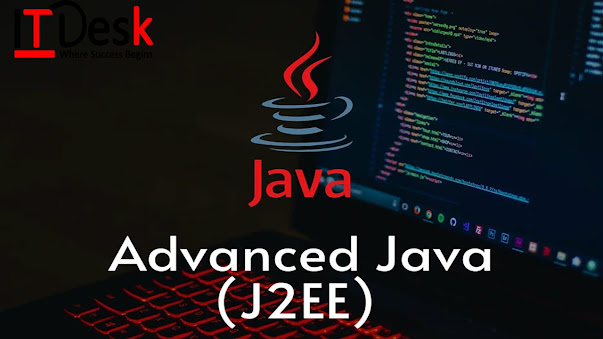Advance Java J2EE: The Key to Mastering Java Web Development
Table of Contents
- Introduction
- Understanding Advance Java J2EE
- 2.1 What is Java?
- 2.2 What is J2EE?
- 2.3 The Evolution of Java and J2EE
- 2.4 Advantages of Using Advance Java J2EE
- Mastering Advance Java J2EE
- 3.1 Core Java Concepts
- 3.2 Understanding Java Servlets
- 3.3 JavaServer Pages (JSP)
- 3.4 JavaBeans and Enterprise JavaBeans (EJB)
- 3.5 Java Persistence API (JPA)
- 3.6 Java Messaging Services (JMS)
- 3.7 Java Transaction API (JTA)
- 3.8 Web Services and SOAP
- 3.9 JavaServer Faces (JSF)
- Advance Java J2EE Frameworks
- 4.1 Spring Framework
- 4.2 Hibernate Framework
- 4.3 Struts Framework
- 4.4 JavaServer Faces (JSF) Framework
- 4.5 Play Framework
- Building Robust Web Applications
- 5.1 Model-View-Controller (MVC) Architecture
- 5.2 Design Patterns in Advance Java J2EE
- 5.3 Security Considerations in Java Web
Development
- 5.4 Performance Optimization Techniques
- 5.5 Scalability and Load Balancing
- Advance Java J2EE Tools and IDEs
- 6.1 Eclipse IDE
- 6.2 IntelliJ IDEA
- 6.3 NetBeans IDE
- Deploying Advance Java J2EE Applications
- 7.1 Application Servers
- 7.2 Docker Containers for Java Applications
- 7.3 Cloud Deployment Options
- Real-world Applications of Advance Java J2EE
- 8.1 E-commerce Platforms
- 8.2 Banking and Financial Systems
- 8.3 Healthcare Applications
- 8.4 Social Media Platforms
- Career Opportunities and Job Roles
- 9.1 Java Developer
- 9.2 J2EE Architect
- 9.3 Full-stack Developer
- 9.4 DevOps Engineer
- Importance of Training and Certification
- Conclusion
Advance Java J2EE: The Key to Mastering Java Web Development
1. Introduction
Java is one
of the most popular and versatile programming languages in the world. It has
found its application in various domains, including web development, mobile app
development, enterprise solutions, and more. When it comes to web development
using Java, Advance Java J2EE stands out as the go-to technology for building
robust and scalable web applications.
2. Understanding Advance Java J2EE
2.1 What is Java?
Java,
developed by Sun Microsystems (now owned by Oracle Corporation), is an
object-oriented programming language known for its "write once, run
anywhere" capability. It provides a robust and secure platform for
developing applications across different platforms. Learn Advanced
Java J2EE by an expert.
2.2 What is J2EE?
Java 2
Platform, Enterprise Edition (J2EE), now known as Java Platform, Enterprise
Edition (Java EE), is an extension of Java that supports the development of
enterprise-level applications. It provides a set of APIs (Application
Programming Interfaces) and tools for building large-scale, distributed, and
multi-tier applications.
2.3 The Evolution of Java and J2EE
Java and
J2EE have undergone significant evolution since their inception. Java has seen
several versions with new features and enhancements, making it more powerful
and efficient. J2EE, on the other hand, has evolved from a basic enterprise
platform to a comprehensive suite of tools and technologies.
2.4 Advantages of Using Advance Java J2EE
- Scalability:
Advance Java J2EE applications can handle large-scale traffic and data
efficiently.
- Security: J2EE
provides robust security features to protect sensitive data and prevent
unauthorized access.
- Portability:
Applications built with J2EE can run on any platform with Java support,
ensuring cross-platform compatibility.
- Modularity: J2EE
allows developers to build applications using reusable components,
promoting modularity and maintainability.
3. Mastering Advance Java J2EE
Mastering
Advance Java J2EE requires a solid understanding of various components and
frameworks. Let's explore some of the key topics:
3.1 Core Java Concepts
Before
diving into Advance Java J2EE, a strong foundation in core Java concepts is
essential. This includes understanding data types, control structures,
object-oriented principles, exception handling, and more.
3.2 Understanding Java Servlets
Java
Servlets are server-side components that handle client requests and generate
dynamic web content. They play a crucial role in web application development.
3.3 JavaServer Pages (JSP)
JSP allows
embedding Java code within HTML pages, making it easier to create dynamic web
content. It simplifies the process of building user interfaces.
3.4 JavaBeans and Enterprise JavaBeans (EJB)
JavaBeans
are reusable components that encapsulate business logic, while Enterprise
JavaBeans (EJB) are server-side components that manage the business logic and
data persistence.
3.5 Java Persistence API (JPA)
JPA is a
Java framework that provides an object-relational mapping (ORM) approach to
interact with databases, simplifying data persistence.
3.6 Java Messaging Services (JMS)
JMS enables
communication between different components of an application through messaging,
ensuring loose coupling and scalability.
3.7 Java Transaction API (JTA)
JTA
provides a standard way to manage distributed transactions in Java
applications, ensuring data integrity and consistency.
3.8 Web Services and SOAP
Web
services facilitate communication between different applications over a
network. SOAP (Simple Object Access Protocol) is a protocol used for exchanging
structured information in web services.
3.9 JavaServer Faces (JSF)
JSF is a
component-based framework for building user interfaces in web applications. It
simplifies UI development by providing reusable components.
4. Advance Java J2EE Frameworks
Several
frameworks complement Advance Java J2EE, making development faster and more
efficient:
4.1 Spring Framework
Spring is a
powerful and widely used framework that simplifies Java development, offering
features like dependency injection and aspect-oriented programming.
4.2 Hibernate Framework
Hibernate
is an ORM framework that simplifies database interactions in Java applications,
making data manipulation and retrieval easier.
4.3 Struts Framework
Struts is a
web application framework that follows the MVC architecture, making it easier
to manage and organize large-scale projects.
4.4 JavaServer Faces (JSF) Framework
JSF, as
mentioned earlier, is a component-based framework for building user interfaces,
reducing development time.
4.5 Play Framework
Play is a
lightweight and high-performance web framework, ideal for building RESTful APIs
and web applications.
5. Building Robust Web Applications
Building
reliable web applications requires attention to various aspects:
5.1 Model-View-Controller (MVC) Architecture
The MVC
architecture separates the application into three components - model, view, and
controller, promoting code modularity.
5.2 Design Patterns in Advance Java J2EE
Design
patterns offer solutions to common design problems, ensuring scalable and
maintainable code.
5.3 Security Considerations in Java Web Development
Implementing
robust security measures is vital to protect the application from potential
threats.
5.4 Performance Optimization Techniques
Optimizing
performance ensures that the application runs smoothly and efficiently, even
under heavy loads.
5.5 Scalability and Load Balancing
Scaling the
application to handle increasing user demands requires effective load balancing
strategies.
6. Advance Java J2EE Tools and IDEs
Several
tools and Integrated Development Environments (IDEs) enhance the Java
development experience:
6.1 Eclipse IDE
Eclipse is
a popular IDE known for its extensive plugin support and seamless integration
with J2EE tools.
6.2 IntelliJ IDEA
IntelliJ
IDEA is a feature-rich IDE that offers advanced code analysis and smart
assistance for Java developers.
6.3 NetBeans IDE
NetBeans is
an open-source IDE that provides a user-friendly environment for Java
development.
7. Deploying Advance Java J2EE Applications
Deploying
J2EE applications requires careful consideration of various factors:
7.1 Application Servers
Choosing
the right application server ensures the smooth functioning of the deployed
application.
7.2 Docker Containers for Java Applications
Docker
containers provide a consistent environment for deploying and managing Java
applications.
7.3 Cloud Deployment Options
Leveraging
cloud platforms for deployment offers scalability and flexibility.
8. Real-world Applications of Advance Java J2EE
Advanced
Java J2EE finds applications in various industries:
8.1 E-commerce Platforms
E-commerce
websites rely on J2EE for handling large-scale transactions and user
interactions.
8.2 Banking and Financial Systems
Java J2EE
is the backbone of secure and efficient banking systems.
8.3 Healthcare Applications
J2EE
enables the development of advanced healthcare applications for patient
management and diagnostics.
8.4 Social Media Platforms
Social
media platforms utilize J2EE to manage vast amounts of user-generated content
and interactions.
9. Career Opportunities and Job Roles
Mastering
Advance Java J2EE opens up a world of opportunities:
9.1 Java Developer
Java
developers create and maintain Java applications, including web and mobile
applications.
9.2 J2EE Architect
J2EE
architects design and oversee the development of large-scale enterprise
applications.
9.3 Full-stack Developer
Full-stack
developers are proficient in both front-end and back-end development, making
them highly sought-after.
9.4 DevOps Engineer
DevOps
engineers focus on streamlining the development and deployment process,
ensuring efficiency and continuous integration.
10. Importance of Training and Certification
Formal
training and certification in Advance Java J2EE demonstrate expertise and
increase employability.
11. Conclusion
Advance
Java J2EE is a powerful technology stack for mastering Java web development.
Its extensive frameworks, tools, and robust features make it the top choice for
building enterprise-grade applications. With the increasing demand for Java
developers, mastering Advance Java J2EE opens doors to a rewarding and
fulfilling career in the world of web development. If you want to learn another
course like the Mean
Stack Development course then should be join IT Desk is the best institute in
India.
FAQs - Frequently Asked Questions
- What is Advance Java J2EE? Advanced Java J2EE is an extension of Java, specifically designed for building large-scale, enterprise-level web applications.
- Why is Advance Java J2EE popular in web development? Advanced Java J2EE offers scalability, security, and portability, making it ideal for building robust web applications.
- Which frameworks complement Advanced Java J2EE? Some popular frameworks include Spring, Hibernate, Struts, JavaServer Faces (JSF), and Play.
- What career opportunities are available for
Java J2EE experts? Java developers, J2EE architects,
full-stack developers, and DevOps engineers are some of the job roles
available.
- Is formal training necessary to learn Advanced
Java J2EE? While self-learning is possible, formal
training and certification can significantly enhance your expertise and
job prospects.




Comments
Post a Comment